Abstract
A large cross sectional survey was carried out using a self administered questionnaire to examine the prevalence of laboratory animal allergy (LAA) and the factors associated with its development. Out of 5641 workers who were exposed to animals at 137 laboratory animal facilities in Japan, 23.1% had one or more allergic symptoms related to laboratory animals. The commonest symptom as rhinitis. About 70% of LAA subjects developed symptoms during their first three years of exposure. Atopy (past and family history), the number of animal species handled, and the time spent in handling correlated significantly with the development of LAA as did some types of job. A close relation between nasal symptoms and exposure to rabbits and between skin symptoms and exposure to rats were found. LAA subjects developed symptoms most quickly to rabbits.
Full text
PDF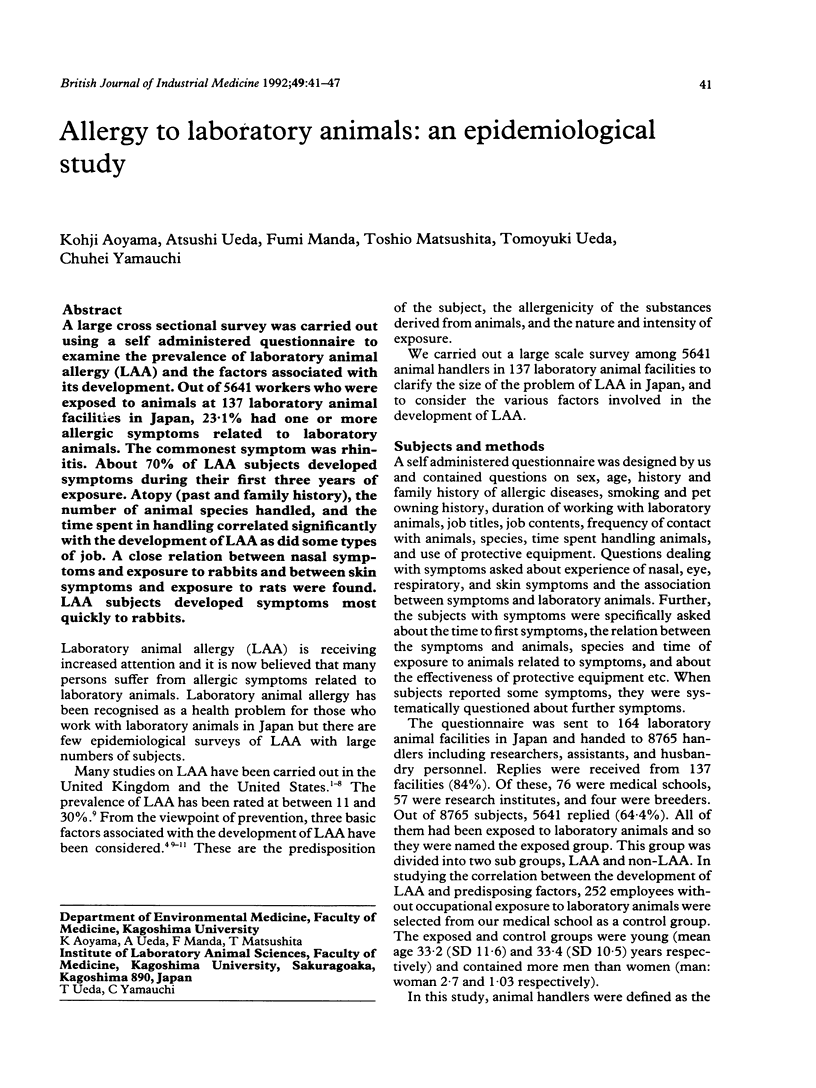
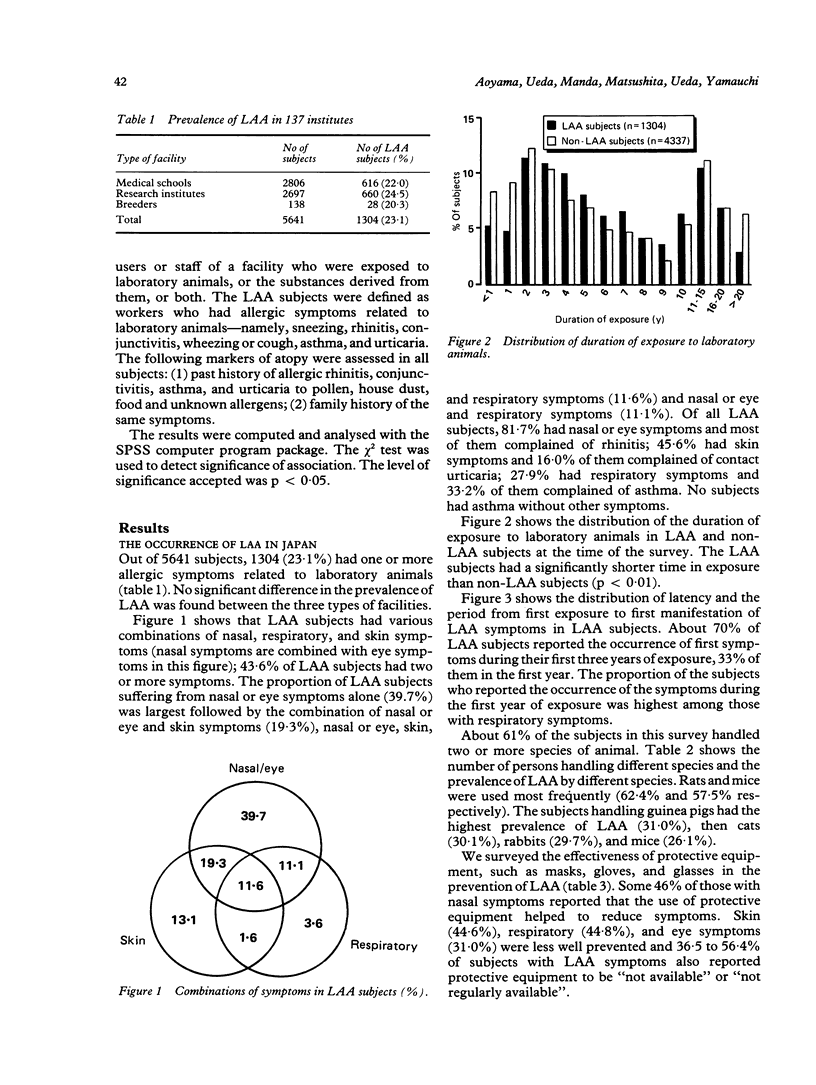
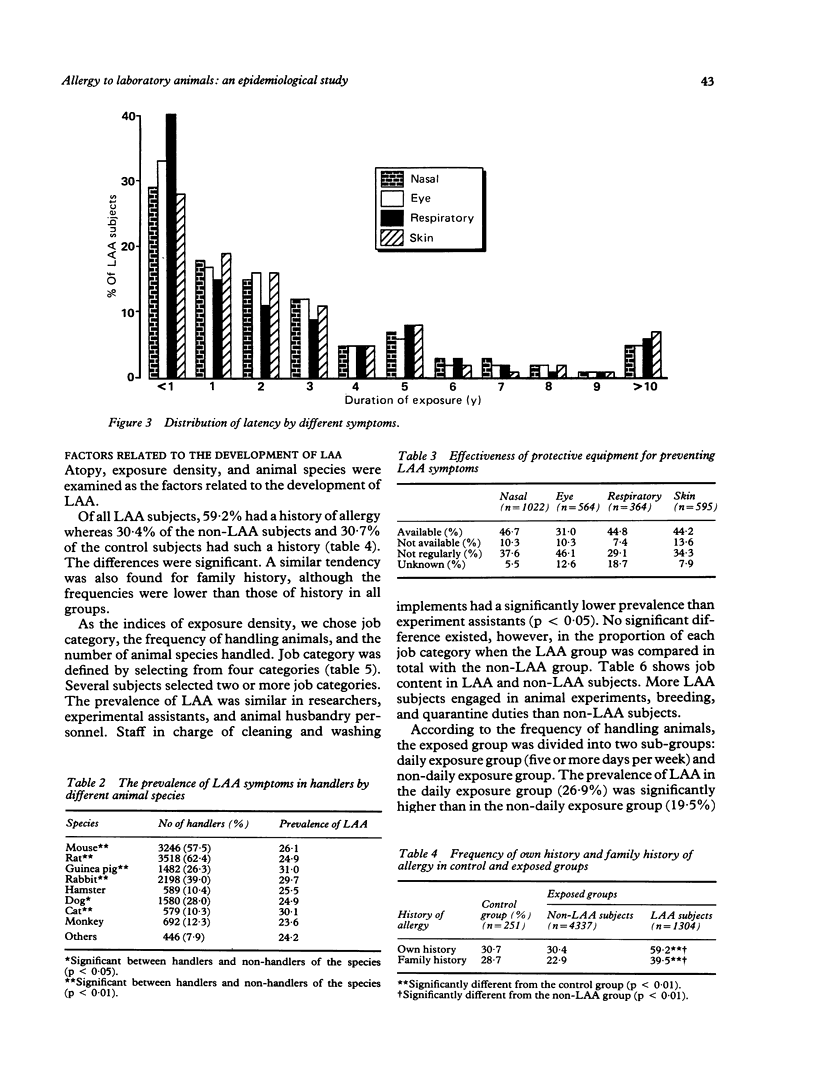
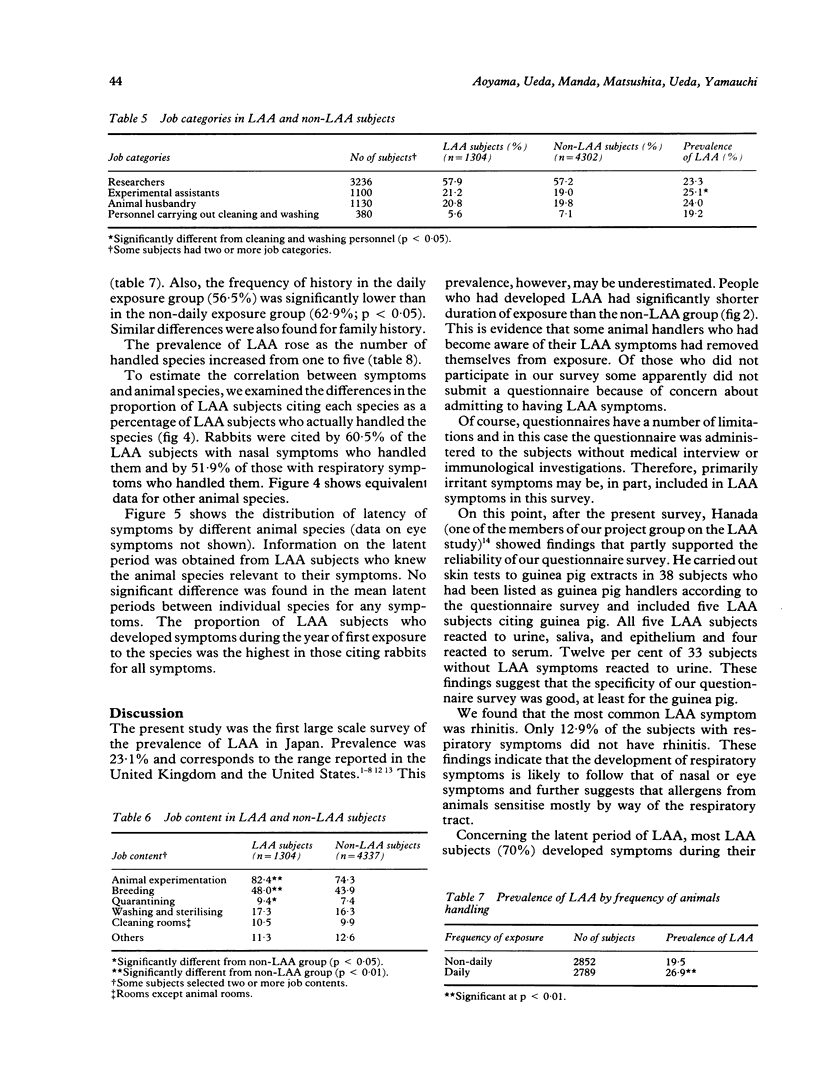
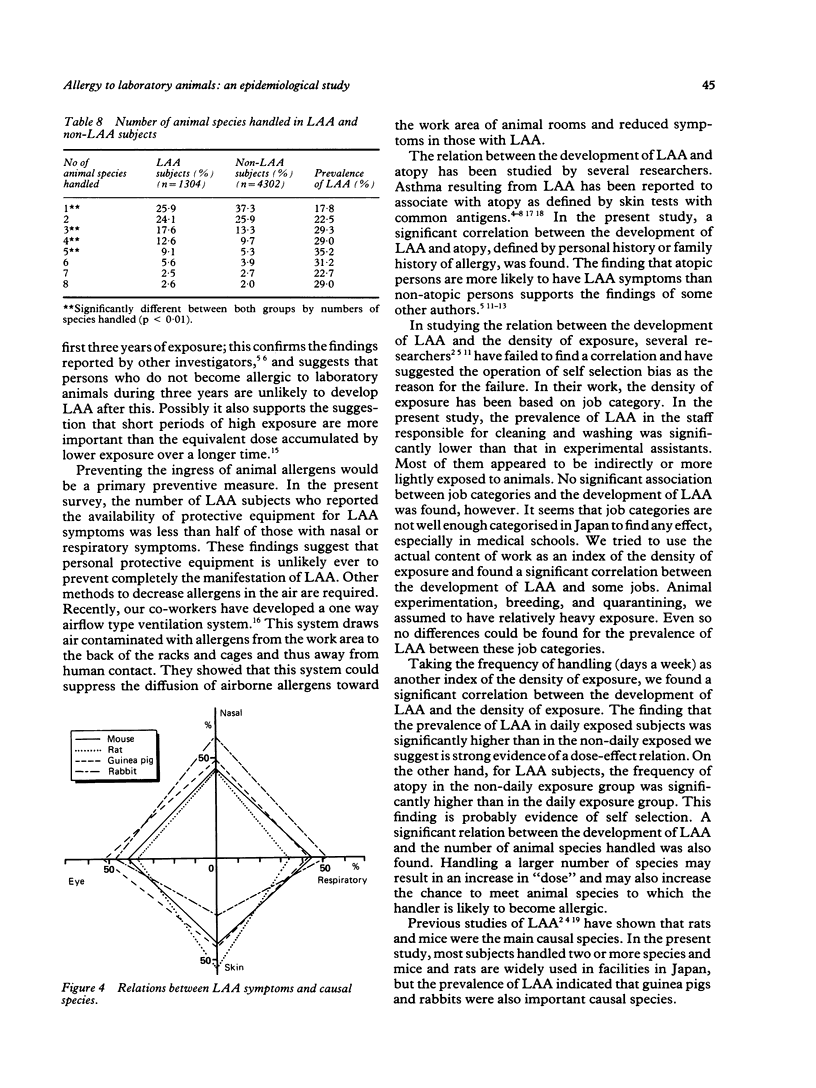
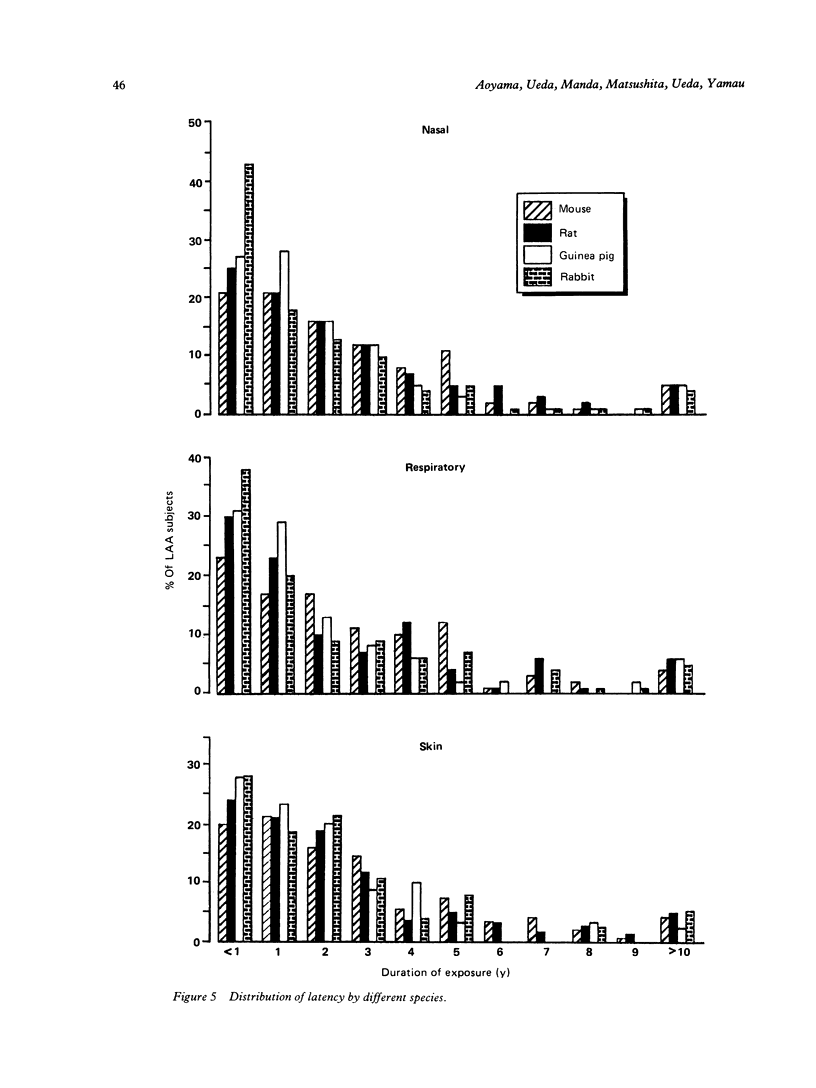
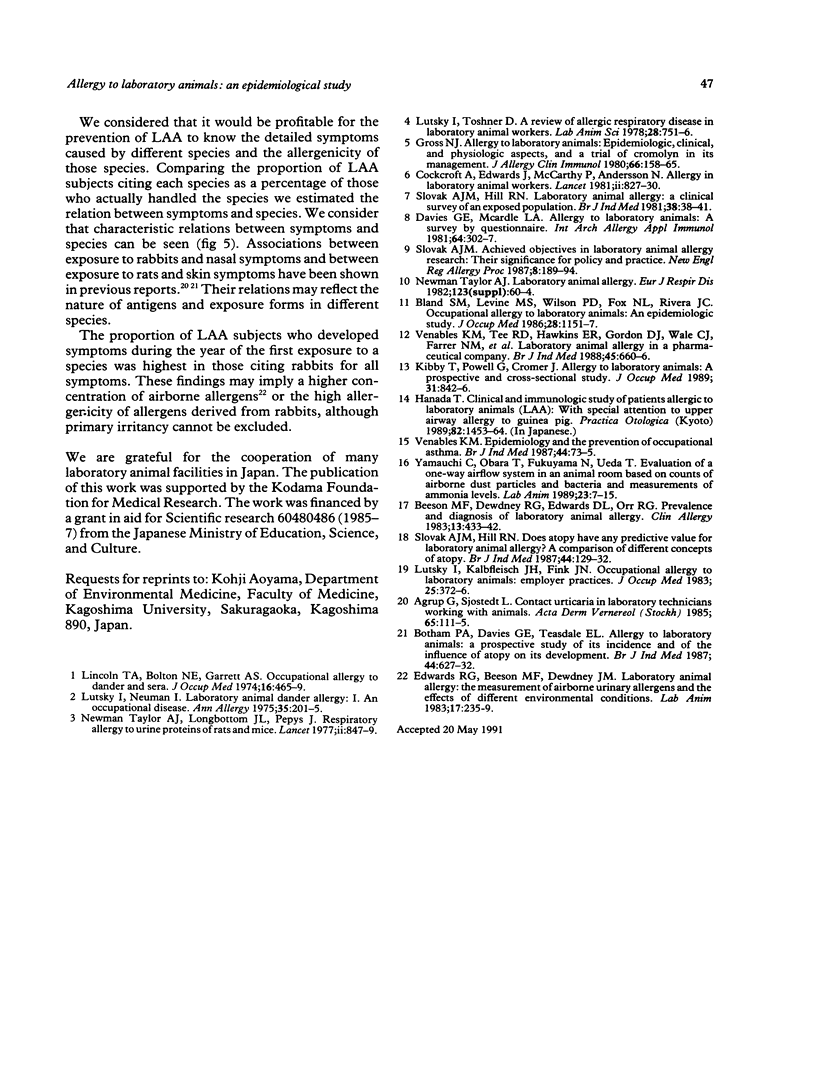
Selected References
These references are in PubMed. This may not be the complete list of references from this article.
- Agrup G., Sjöstedt L. Contact urticaria in laboratory technicians working with animals. Acta Derm Venereol. 1985;65(2):111–115. [PubMed] [Google Scholar]
- Beeson M. F., Dewdney J. M., Edwards R. G., Lee D., Orr R. G. Prevalence and diagnosis of laboratory animal allergy. Clin Allergy. 1983 Sep;13(5):433–442. doi: 10.1111/j.1365-2222.1983.tb02619.x. [DOI] [PubMed] [Google Scholar]
- Bland S. M., Levine M. S., Wilson P. D., Fox N. L., Rivera J. C. Occupational allergy to laboratory animals: an epidemiologic study. J Occup Med. 1986 Nov;28(11):1151–1157. [PubMed] [Google Scholar]
- Botham P. A., Davies G. E., Teasdale E. L. Allergy to laboratory animals: a prospective study of its incidence and of the influence of atopy on its development. Br J Ind Med. 1987 Sep;44(9):627–632. doi: 10.1136/oem.44.9.627. [DOI] [PMC free article] [PubMed] [Google Scholar]
- Cockcroft A., Edwards J., McCarthy P., Andersson N. Allergy in laboratory animal workers. Lancet. 1981 Apr 11;1(8224):827–830. doi: 10.1016/s0140-6736(81)92693-3. [DOI] [PubMed] [Google Scholar]
- Davies G. E., McArdle L. A. Allergy to laboratory animals: a survey by questionnaire. Int Arch Allergy Appl Immunol. 1981;64(3):302–307. doi: 10.1159/000232707. [DOI] [PubMed] [Google Scholar]
- Edwards R. G., Beeson M. F., Dewdney J. M. Laboratory animal allergy: the measurement of airborne urinary allergens and the effects of different environmental conditions. Lab Anim. 1983 Jul;17(3):235–239. doi: 10.1258/002367783781070696. [DOI] [PubMed] [Google Scholar]
- Gross N. J. Allergy to laboratory animals: epidemiologic, clinical, and physiologic aspects, and a trial of cromolyn in its management. J Allergy Clin Immunol. 1980 Aug;66(2):158–165. doi: 10.1016/0091-6749(80)90064-0. [DOI] [PubMed] [Google Scholar]
- Kibby T., Powell G., Cromer J. Allergy to laboratory animals: a prospective and cross-sectional study. J Occup Med. 1989 Oct;31(10):842–846. doi: 10.1097/00043764-198910000-00010. [DOI] [PubMed] [Google Scholar]
- Lincoln T. A., Bolton N. E., Garrett A. S., Jr Occupational allergy to animal dander and sera. J Occup Med. 1974 Jul;16(7):465–469. [PubMed] [Google Scholar]
- Lutsky I. I., Kalbfleisch J. H., Fink J. N. Occupational allergy to laboratory animals: employer practices. J Occup Med. 1983 May;25(5):372–376. [PubMed] [Google Scholar]
- Lutsky I. I., Neuman I. Laboratory animal dander allergy: I. An occupational disease. Ann Allergy. 1975 Oct;35(4):201–205. [PubMed] [Google Scholar]
- Lutsky I., Toshner D. A review of allergic respiratory disease in laboratory animal workers. Lab Anim Sci. 1978 Dec;28(6):751–756. [PubMed] [Google Scholar]
- Newman-Taylor A. J. Laboratory animal allergy. Eur J Respir Dis Suppl. 1982;123:60–64. [PubMed] [Google Scholar]
- Slovak A. J. Achieved objectives in laboratory animal allergy research: their significance for policy and practice. N Engl Reg Allergy Proc. 1987 May-Jun;8(3):189–194. doi: 10.2500/108854187778984654. [DOI] [PubMed] [Google Scholar]
- Slovak A. J., Hill R. N. Does atopy have any predictive value for laboratory animal allergy? A comparison of different concepts of atopy. Br J Ind Med. 1987 Feb;44(2):129–132. doi: 10.1136/oem.44.2.129. [DOI] [PMC free article] [PubMed] [Google Scholar]
- Slovak A. J., Hill R. N. Laboratory animal allergy: a clinical survey of an exposed population. Br J Ind Med. 1981 Feb;38(1):38–41. doi: 10.1136/oem.38.1.38. [DOI] [PMC free article] [PubMed] [Google Scholar]
- Taylor A. N., Longbottom J. L., Pepys J. Respiratory allergy to urine proteins of rats and mice. Lancet. 1977 Oct 22;2(8043):847–849. doi: 10.1016/s0140-6736(77)90783-8. [DOI] [PubMed] [Google Scholar]
- Venables K. M. Epidemiology and the prevention of occupational asthma. Br J Ind Med. 1987 Feb;44(2):73–75. doi: 10.1136/oem.44.2.73. [DOI] [PMC free article] [PubMed] [Google Scholar]
- Venables K. M., Tee R. D., Hawkins E. R., Gordon D. J., Wale C. J., Farrer N. M., Lam T. H., Baxter P. J., Newman Taylor A. J. Laboratory animal allergy in a pharmaceutical company. Br J Ind Med. 1988 Oct;45(10):660–666. doi: 10.1136/oem.45.10.660. [DOI] [PMC free article] [PubMed] [Google Scholar]
- Yamauchi C., Obara T., Fukuyama N., Ueda T. Evaluation of a one-way airflow system in an animal room based on counts of airborne dust particles and bacteria and measurements of ammonia levels. Lab Anim. 1989 Jan;23(1):7–15. doi: 10.1258/002367789780886849. [DOI] [PubMed] [Google Scholar]


